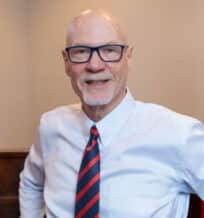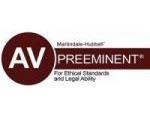On today’s Inside Look by Brooks, Steve Brooks talks about the number one asked question in Brooks Law Group.
Find us on:
- Facebook: https://www.facebook.com/brookslawgroup/
- YouTube: https://www.youtube.com/BrooksLawGroup
- Twitter: https://twitter.com/_brookslawgroup
Introduction
Good afternoon! Welcome to Brooks Law Group’s Inside Look by Brooks. Steve Brooks here. Today’s topic is one… Well, let me say it this way. I put a message out there to some of our case managers and there was agreement that one of the most commonly asked questions of a new client is this: Why is the process so long and drawn out? And one of the reasons I do these videos is to help dispel the common myths I find out there about this kind of law and how these cases operate.
Steps To Pursuing Your Personal Injury Case
I explain to our new clients, and we even came up with a diagram, there are a minimum of 36 touch action points that have to take place in a personal injury case before the time of the actual incident, the injury, and the time it’s concluded. I know you can’t read the writing, but here’s a timeline of the touchpoints we have to be involved in to make a personal injury case move from point A to point Z. A lot of it is client focused, meaning all personal injuries are medically driven. Medical treatment for your injuries doesn’t happen overnight. If you’ve suffered a back injury, a shoulder injury, a knee injury, or whatever kind of injury it is, there’s a certain process and protocol for that treatment and until you’ve completed that treatment, whether it’s us or some other attorney, we’d be short selling you if we tried to resolve that case before you’ve completed treatment. There are some exceptions, for instance: if you had a severe injury and were in the hospital and it required surgery and there was only $10,000 insurance policy the liability policy from the other driver who was at-fault would probably tender that money and pay it immediately because they know your injuries exceed $10,000. But those kinds of cases are rare, most cases where there is adequate coverage is going to require you to go to treatment.
When Treating Is Done
Now, treatment can sometimes be completed in as short as 3 months, and sometimes it goes as long as a year to a year and a half depending on your need for a surgery or multiple surgeries. So, until you complete your treatment and you have a doctor saying “Okay, I have done everything I can do to get you into your pre-accident condition. There is no more treatment. Come back to me on an as needed basis.” When a doctor tells you that that he’s finished his course of treatment that you followed through and been through rehab or gotten the injection or received the surgery, then it’s time to call up your lawyer and say “Okay, guys. The doctor says I’m through treatment. What’s next?” And that’s when we continue to gather all the final records we may not have yet, and proceed to put together a demand package based on the injury presented in the records that we get from your doctors. So, we’d be selling your case short if we try to resolve your case at any time before you finish treating. So, and then there’s a lot of other touch points. We have to get, not only your medical records, we have to get the accident report, all the repair records of the car. If the car was nominally damage, it may give the insurance company credence to say it was not that severe of a collision, and so we like to have cars taken to body shops that are really thorough and have the consumer’s interest in mind. We like to get pictures of the car when it’s torn down, so we can see all the underbody damage to the car, and get a really true estimate of the car damage because obviously the more car damage and more thorough the car repair shop is, the more we can get the extent of the actual impact and it’s that impact from the collision that transfers into your body that causes personal injury.
Preconceived Notions
So, there’s a lot of touch point, it’s not just come in here. A lot of people that come into my office after an accident are under a preconceived notion that in a week or two, we’re going to get them a check. I don’t know where that comes from because cases resolve because cases resolving that quickly are the exception because there’s no way you’re going to finish treatment in a week or two, so that’s a common myth we like to expel. If you have any questions about your personal injury case, I’d be glad to sit down with you and have a phone call with to go over the touch points we believe we have to do to properly document and sustained a personal injury claim on your behalf. If you have any questions, I’d be glad to talk to you and help overcome these myths that you come in here with.
Conclusion
My email address is [email protected]. That’s [email protected], and I’ll be glad to communicate with you about the questions that you have, the status or process of your case, or if you have a friend that has questions, I’ll be glad to talk to them to. So thank you for joining us today and next week we’ll try to come up with the second most asked questions that our case managers get. We’ll try to run through the top five. Again, have a great Easter weekend. The weather is supposed to be really nice here in Florida. Thank you joining me; we’ll see you again next Friday at 3:00.













